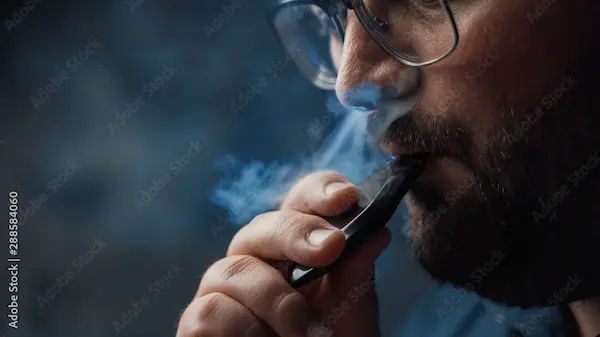Guide to What Are The 4000 Chemicals In Cigarettes
Discover what’s really inside cigarette smoke — from over 7,000 chemicals to the toxins and carcinogens that harm your lungs, heart, and DNA. Learn the facts, myths, and safer ways to quit smoking for good.


Introduction
Ever wondered what you truly inhale when you smoke? Cigarettes contain thousands of chemicals—many toxic and dozens proven to cause cancer. This guide explains what they are, where they come from, and what they do to your body, while debunking myths and offering practical advice to reduce harm and quit smoking.
The “4,000 chemicals” claim: What the science actually says
Cigarette smoke contains far more than 4,000 chemicals—modern research identifies over 7,000 compounds, with
hundreds toxic and at least 70 carcinogenic.
Everything from gases like carbon monoxide to complex molecules forms when tobacco burns. Many of the most dangerous chemicals aren’t added but created through combustion. Advanced analysis techniques now detect thousands of compounds that were previously invisible, revealing the true complexity of cigarette smoke.
Consult a Top General Practitioner for Personalised Advice
Why did the number change
Improved testing and detection methods have expanded our understanding of smoke composition. Agencies now focus on Harmful and Potentially Harmful Constituents (HPHCs) to guide regulation and public awareness.
Unique insight: The concentration of chemicals changes with how a person smokes—longer drags and blocked filter
vents can dramatically increase toxic exposure.
Where the chemicals in cigarettes come from
Cigarette chemicals come from the tobacco plant, added ingredients, and the burning process itself.
1. The plant and the soil
Tobacco plants naturally absorb metals like cadmium and lead from the soil, while fertilisers may add radioactive
elements like polonium-210.
2. Additives and flavours
Manufacturers use additives like sugars, cocoa, and menthol. When burned, these release harmful aldehydes such as
formaldehyde and acetaldehyde. Menthol gives a cooling sensation that encourages deeper inhalation, increasing toxin intake.
3. Combustion and chemical creation
When lit, a cigarette burns at nearly 900°C, creating thousands of new chemicals — including carbon monoxide, hydrogen cyanide, benzene, formaldehyde, and carcinogenic hydrocarbons.
Unique insight: Cigarette design (filters, paper, and ventilation holes) affects the mix of chemicals released. “Light” cigarettes often mislead smokers into inhaling more deeply, negating any perceived benefit.
The worst offenders: Top toxic and carcinogenic chemicals
Out of thousands of substances, a few key chemical groups cause the most harm to human health.
Gases
- Carbon monoxide (CO): Reduces oxygen delivery to vital organs.
- Hydrogen cyanide: Damages airways and impairs the lungs’ natural cleaning system.
Carbonyls
- Formaldehyde, acetaldehyde, acrolein: Strong irritants that inflame and scar airways, leading to COPD and tissue
damage.
Volatile Organic Compounds (VOCs)
- Benzene, 1,3-butadiene, toluene: Known carcinogens linked to blood and bone marrow cancers.
Nitrosamines (TSNAs) and PAHs
- Potent cancer-causing agents produced during curing and burning of tobacco.
Heavy metals and radioactive elements
- Cadmium, lead, arsenic, polonium-210: Accumulate in the body and contribute to cancers and organ toxicity.
Unique insight: Chemicals like acetaldehyde can intensify nicotine addiction by altering the brain’s reward systems.
What these chemicals do to your body
The chemical cocktail in cigarette smoke harms nearly every organ and system.
Lungs and airways
Smoke chemicals destroy lung tissue, inflame airways, and damage DNA, leading to chronic bronchitis, COPD, and
lung cancer. Persistent coughs or breathlessness should be assessed by a doctor through Apollo 24|7.
Heart and circulation
Carbon monoxide reduces oxygen flow, while VOCs and acrolein damage blood vessels, promoting clots and heart disease.
Whole-body effects
Toxins affect fertility, increase risks of cancers (kidney, bladder, oesophagus), worsen diabetes, and accelerate memory
decline.
Unique insight: Once you quit, your body begins repairing within weeks — CO levels normalise and heart attack risk drops significantly within a year.
Secondhand and thirdhand smoke: Hidden chemical exposures
Even if you don’t smoke, you can still be harmed by others’ cigarettes.
Secondhand smoke
Combines exhaled and sidestream smoke, both rich in toxic chemicals. Children and people with asthma or heart
disease are particularly vulnerable.
Thirdhand smoke
The residue left on furniture, fabrics, and walls reacts with air pollutants to form new carcinogens. Cleaning and
ventilation help, but only a smoke-free environment fully protects your home.
Unique insight: Nicotine residue can linger for months. Deep cleaning, repainting, and air filter replacement are
essential when moving into a previously smoked-in property.
Myths, marketing, and “safer-sounding” cigarettes
Many so-called “healthier” cigarette types are marketing illusions.
Light, mild, or low-tar
Machine tests misled smokers; in reality, health risks are almost identical.
Menthol
Makes smoke smoother but increases nicotine dependence.
Natural or additive-free
Still produces harmful combustion byproducts.
Filters
Provide little real protection and may encourage deeper inhalation.
Unique insight: Switching brands or types won’t protect you — only quitting can reduce the damage.
E-cigarettes vs cigarettes: A chemical reality check
E-cigarette vapour contains fewer toxic chemicals but is not harmless.
It includes nicotine, formaldehyde, acetaldehyde, and metal particles. For adults trying to quit smoking, complete
switching may reduce harm, but dual use offers little benefit. For non-smokers and pregnant people, vaping remains
unsafe.
Unique insight: A “safer” alternative only works if it replaces cigarettes entirely — using both cancels out any health
advantage.
Reducing harm and quitting: Practical steps and when to see a doctor
Quitting is the most effective way to protect yourself from toxic cigarette chemicals.
Steps to reduce exposure
- Keep your home and car smoke-free.
- Use evidence-based aids: nicotine patches, gum, or prescribed medicines.
- Seek behavioural support through quitlines or digital programmes.
- Track progress — improvements begin within days of quitting.
When to seek medical advice
Persistent coughs, wheezing, chest pain, or coughing blood need prompt evaluation. Smokers should consider lung and
heart assessments and cancer screening through Apollo 24|7.
Unique insight: Treat quitting like a structured health project—plan, track, and review progress regularly with medical
guidance.
Conclusion
Cigarette smoke isn’t just “tar and nicotine.” It’s a complex blend of more than 7,000 chemicals—many toxic and dozens proven to cause cancer. Changing brands or filters won’t make smoking safer. But your body begins to recover within days of quitting, with breathing, circulation, and energy all improving.
If your symptoms persist or you need tailored cessation support, book a consultation with a doctor via Apollo 24|7 for a personalised quit plan and health screening. The strongest step toward protecting your health—and your loved ones—is quitting completely.
Consult a Top General Practitioner for Personalised Advice
Consult a Top General Practitioner for Personalised Advice

Dr. Vivek D
General Physician
4 Years • MBBS
Bengaluru
PRESTIGE SHANTHINIKETAN - SOCIETY CLINIC, Bengaluru

Dr. Anand Ravi
General Physician
2 Years • MBBS
Bengaluru
PRESTIGE SHANTHINIKETAN - SOCIETY CLINIC, Bengaluru

Dr Syed Mateen Pasha
General Physician
2 Years • MBBS
Bengaluru
PRESTIGE SHANTHINIKETAN - SOCIETY CLINIC, Bengaluru

Dr. D Bhanu Prakash
General Practitioner
10 Years • MBBS, AFIH, Advanced certificate in critical care medicine, Fellowship in critical care medicine
Hyderabad
Apollo 24|7 Clinic, Hyderabad
Dr. Karanam Kondalamma
General Practitioner
4 Years • MBBS
Hyderabad
KK Clinic, Hyderabad
Consult a Top General Practitioner for Personalised Advice

Dr. Vivek D
General Physician
4 Years • MBBS
Bengaluru
PRESTIGE SHANTHINIKETAN - SOCIETY CLINIC, Bengaluru

Dr. Anand Ravi
General Physician
2 Years • MBBS
Bengaluru
PRESTIGE SHANTHINIKETAN - SOCIETY CLINIC, Bengaluru

Dr Syed Mateen Pasha
General Physician
2 Years • MBBS
Bengaluru
PRESTIGE SHANTHINIKETAN - SOCIETY CLINIC, Bengaluru

Dr. D Bhanu Prakash
General Practitioner
10 Years • MBBS, AFIH, Advanced certificate in critical care medicine, Fellowship in critical care medicine
Hyderabad
Apollo 24|7 Clinic, Hyderabad
Dr. Karanam Kondalamma
General Practitioner
4 Years • MBBS
Hyderabad
KK Clinic, Hyderabad
More articles from respiratory-conditions
Frequently Asked Questions
1) How many chemicals are in cigarette smoke?
More than 7,000 compounds have been found, including hundreds that are toxic and at least 70 carcinogens.
2) Are menthol cigarettes safer?
No. Menthol alters sensation but does not remove harmful chemicals.
3) What chemicals cause cancer?
Key carcinogens include nitrosamines (NNK, NNN), benzene, formaldehyde, and benzo[a]pyrene.
4) Is secondhand smoke dangerous?
Yes. It exposes others to the same toxic chemicals and increases the risk of cancer and heart disease.
5) Are e-cigarettes a safer option?
They emit fewer toxicants but are not harmless. Full switching, not dual use, is needed to lower harm.

